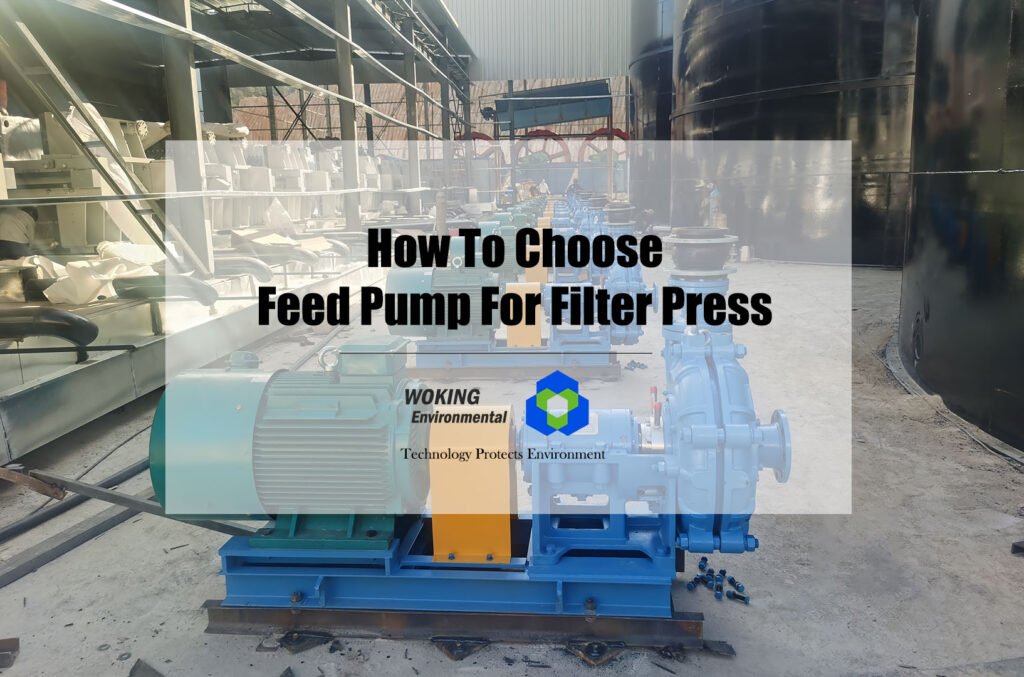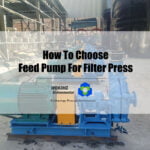Usually, filter press need to be combined with supporting feeding pump. But, how many types of feed pumps are there? How to select the matching feed pump for filter press, and what are the precautions for selecting the filter press pump?
Filter press feed pump is also called “filter press pump”. The function of the feed pump is to supply slurry to the filter chamber of the filter press. The filtration speed of the filter press depends on the feed pressure, and the feed pressure is related to the strength of the filter press and the head of the feed pump. Therefore, when selecting the feed pump, in addition to the performance of the slurry, the feed pump should be matched with the filter press.
The most common feed pumps include: Centrifugal Pump, Screw Pump, Roots Pump, Diaphragm Pump, Plunger Pump etc. At present, centrifugal pumps are the most widely used in industry, including ordinary pumps, stainless steel pumps, mud pumps, slurry pumps, corrosion-resistant plastic pumps, etc.
Filter Press Pump Features
- Motor shall not be overloaded from large flow feeding at the initial stage of feeding to long-term high pressure at the later stage of pressing.
- The performance curve is steep. With the change of feeding resistance, the automatic conversion of large flow low pressure and small flow high pressure can be realized.
- Always keep high pressure without leakage.
How To Choose The Right Feed Pump
- Determine the filter area of the filter press: The filter area of the filter press is the main basis for selecting the matching feed pump. The pump manufacturer will match the pump size, outlet and inlet diameter, and motor size according to the filter area provided by the customer.
- Consider the slurries to be delivered: Customers should provide the concentration and medium proportion of the slurry to be delivered to the pump manufacturer. Based on this information, the manufacturer will determine the feed pump materials required for the specific parameters.
- Choose the appropriate feed pump materials: Feed pumps are available in different materials, including cast iron, common alloy, high chromium alloy, and stainless steel. If the slurry is not particularly corrosive, the high chromium alloy filter press pump is an excellent choice. This material has good wear and corrosion resistance, and its service life is longer than cast iron and ordinary alloy pumps. Moreover, it is less expensive than stainless steel.
4 Tips You Need Pay Attention To
- Select Specialized Feed Pump
In order to meet the working principle of the filter press, it is better to select specialized feed pump, If other types of pumps are selected, the basic parameters meet the requirements, but in actual operation, it is easy to break the pump shaft and other problems. - Determine Basis of Flow
The feed pump needs to be consistent with the working principle of filter press. It is required that when the feed pump starts to feed, the required pressure (lift) is low, while the large flow is required to fill the filter press chamber; when the pressure is maintained, the flow is basically not required, and the high pressure (lift) is required to discharge the water. - Determine Pump lift
The feed pump lift is not necessarily the higher the better. When the actual filter pressure is higher than the pressure required by the filter press, the filter cloths service life is often shorter. - Proper Transmission Mode
At present, feed pump adopts direct and indirect transmission. Considering the working characteristics of the feed pump and the service life of the overcurrent parts, most feed pumps adopt indirect transmission.








